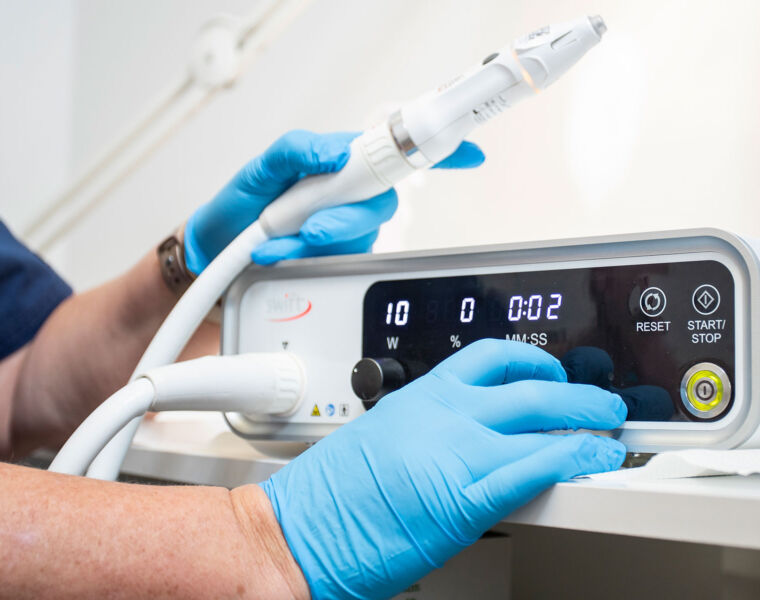
The medical industry has invested around $100 billion in a quest for a cure for Alzheimer’s. But they have come up relatively empty-handed. However, a simple, inexpensive test could potentially predict Alzheimer’s, enabling preventative measures that could save the NHS over £60 million annually.
Historically, the focus has been on developing drugs to reduce two chemical compounds associated with Alzheimer’s and dementia: amyloid and p-tau. These proteins can form plaques in the brain and lead to tangled nerves. However, there is a third compound—homocysteine, an amino acid that becomes toxic at high levels—which has not received as much attention from the drug industry and Alzheimer’s charities.
Current Studies and Their Drawbacks
A £10 million study is currently investigating whether a blood test for p-tau or amyloid can predict the likelihood of developing Alzheimer’s. This initiative aims to identify those at risk and treat them early.
However, this approach has significant drawbacks. Not everyone with elevated p-tau or amyloid levels will develop Alzheimer’s. Moreover, recent reports have highlighted that individuals without a diagnosis of brain shrinkage could be offered new drug treatments with severe side effects, including brain bleeding or swelling, which have occurred in over one-fourth of participants in recent trials; there have also been seven deaths. Despite these risks, many desperate patients are enrolling in these trials, hoping for the elusive cure to be found.
The Research
But are there really no alternatives? Well, none that patients are routinely told about. They involve changes in diet and lifestyle that are very likely to improve your overall health, including that of your brain, and very unlikely to cause damaging side effects.
Almost all the money for research, pledged by governments and raised by Alzheimer’s charities, is going in the direction of drug treatments. Alzheimer’s Research UK’s (ARUK) website says, “We exist for a cure”. Yet, most of the money is going toward amyloid and p-tau-related research, neither of which has been established as causal. In other words, high levels may just be a consequence of the disease process.
Homocysteine
The same is not true for raised blood levels of homocysteine. If levels rise in the brain, it shrinks faster and cognitive abilities decline. If it goes down, they improve, and brain shrinkage slows. This means that it is causing the damage, and so would logically be a target for treatment. The only way to do it, however, is with high-dose B vitamins (B6, B12 and folate). Several gold-standard, placebo-controlled trials have found this to be very safe and effective. However, this approach is not patentable, and so it yields nothing like a drug profit.
But the benefits of treating homocysteine don’t stop there. It is a much better biomarker of risk for Alzheimer’s than plaque and p-tau both because it is more easily measured and more safely lowered. And when it is lowered, unlike those two, it actually improves cognitive function and slows brain shrinkage by as much as two-thirds. It also helps to stop p-tau formation.
Routine checks for homocysteine levels could prevent thousands of Alzheimer’s cases, and according to Dr Apostolos Tsiachristas from the University of Oxford, research suggests that such preventative measures could add 14 years to life expectancy.
It’s worth noting that about half of people over 65 have a homocysteine level above 11mcmol/l, which is where it starts to become damaging.
Supporting studies
In one study, a third of those treated ended the study with no clinical dementia rating, meaning they could no longer be diagnosed with cognitive impairment. Those with sufficient omega-3 DHA, which is the most important structural fat in the brain, had 73% less brain shrinkage compared to placebo when given the B vitamin treatment.
In contrast, in the last anti-amyloid treatment trial, brain shrinkage accelerated by about a fifth in those getting the drug, compared to placebo, and not one person achieved a clinical dementia rating of zero.
It should be clear by now, after decades of scientific research, that amyloid plaque is not a cause of Alzheimer’s but a consequence. The same is likely to be true for p-tau tangles.
As an analogy, consider your teeth. Is plaque the cause of tooth decay? Sure, flossing your teeth and getting the plaque scraped off by the dental hygienist helps, but what causes the plaque? The answer is a bad diet – in this case, one high in sugar and low in fibre. Despite fifty years of research, there is no ‘cure’ for tooth decay, but it can be prevented. The same concept applies to Alzheimer’s, which is as preventable as tooth decay with the right diet, nutrition and lifestyle – which also happens to include less sugar and more fibre.

Alzheimer’s Prevention
How preventable is Alzheimer’s? It accounts for two-thirds of dementia cases. The most conservative figure is 40%. More optimistic estimates say around 80%. Since only one in a hundred cases is caused by genes, Alzheimer’s may be entirely preventable in those 99% who do not have the rare causative genes and act early enough to optimise all diet and lifestyle factors. It is not an inevitable consequence of the ageing process, as evidenced by the fact that the majority of people don’t get it.
Why the difference in figures?
Why the difference in figures? It’s all to do with what is or isn’t included in prevention studies. The most widely used review for dementia prevention in the UK is the 2020 report of the Lancet Commission, authored by Professor Gill Livingston. Both this and the first edition in 2017 failed to even mention homocysteine, despite being repeatedly sent all the evidence of the undeniable beneficial effects of homocysteine-lowering B vitamins by the Oxford Project to Investigate Memory and Ageing (OPTIMA) at the University, headed by former Deputy Head of Medical Science, Professor David Smith.
This is a major and damaging error and has led to the widespread belief that vitamin B supplements are not part of the usual list of preventive actions. But it should be corrected, especially considering that a US National Institutes of Health study attributes 22% of the risk of Alzheimer’s to raised homocysteine. Also, the best study of all, looking at 396 studies in total, published in 2020, concluded: ‘Homocysteine-lowering treatment seems the most promising intervention for Alzheimer’s disease prevention.’
Prevention
Of the three leading charities, two spend nothing on prevention. ARUK claim to spend 5%, but none of this goes towards B vitamins or other brain-friendly nutrients such as omega-3 or vitamin D. They, too, ignore homocysteine and the beneficial effects of lowering it with B vitamins, as first shown in a 2010 Oxford University study they actually helped fund!
Prevention studies are almost always going to underestimate (never over-estimate) the power of prevention due to excluding risk factors, but also because they largely ignore the ‘1+1=3’ compounding impact of interactive risk factors. B vitamins, for example, don’t work without sufficient omega-3, and omega-3 oils don’t work in people with raised homocysteine because of a lack of B vitamins. This has been shown in four trials – in the UK, the Netherlands, Sweden and China.

The combination of B vitamins given to people sufficient in omega-3 DHA improved the reduction in brain shrinkage from 53% to 73%. Pollution exposure is a risk factor, but in those with lower homocysteine, this effect is much reduced. Poor sleep is a risk factor, but less so in those who exercise.
For the past five years leading UK researchers led by neurologist Professor Peter Garrard, who is the Director of the dementia research group in the St George’s, University of London Neuroscience Research Section, have tried to get funding to test the most promising combination – B vitamins and omega-3 – to no avail. Such a trial is badly needed and would cost a fraction of that being spent on amyloid or p-tau.
So, what if a person does everything right – enough B vitamins to keep homocysteine low, sufficient omega-3, low sugar, high fibre diet, enough vitamin D (Alzheimer’s is four times less likely in those with sufficient vitamin D), and an active physical, intellectual and social lifestyle, plus good sleep and not too much stress?
The only ongoing study and database, the COGNITION Biobank that assesses all these risk factors as well as includes blood tests of four critical biomarkers, homocysteine, omega-3 index, vitamin D and HBA1c, which measures glucose control, is being run by the charity foodforthebrain.org. It describes itself as ‘citizen science’ because anyone can get involved by doing a free online Cognitive Function Test, filling in a questionnaire about their diet, lifestyle and medical history, and sending in a blood sample from a home test kit.
So far, over 400,000 people have been tested. But, unlike the £10 million trial, funded by the People’s Lottery, the Gates Foundation, ARUK and the Alzheimer’s Society, it gets no funding. It is literally funded by the citizen scientists who chip in £50 a year and pay for their own tests. Their message is simple: prevention is better than cure.
Summary
While the pursuit of a pharmaceutical cure for Alzheimer’s continues, it is essential to prioritise and fund preventative measures that involve diet, lifestyle, and routine checks for biomarkers like homocysteine. These strategies offer a safer and potentially more effective way to combat this debilitating disease.
To test yourself, visit www.foodforthebrain.org.
To find out more about prevention, visit www.alzheimersprevention.info.

About the Author
Patrick Holford (shown above) is a Nutrition and Mental Health expert & Founder of the Institute for Optimum Nutrition, VitaminC4Covid, and the charitable Food for the Brain Foundation, where he directs their Alzheimer’s prevention project, including Alzheimer’s Prevention Day. Patrick reads hundreds of studies a year, assimilating the latest health breakthroughs and turning them into practical advice to make it easy for everyone to live a healthy life. He is the author of 46 health books translated into over 30 languages.
References:
These are key papers regarding the stated facts in this article.
- New York Times article: https://www.nytimes.com/2024/03/04/health/alzheimers-amyloid-diagnosis.html
- Homocysteine and p-tau: https://foodforthebrain.org/the-p-tau-delusion/
- Donanemab review in the British Medical Journal: BMJ 2023;382:p1852
http://dx.doi.org/10.1136/bmj.p1852; - Telegraph reports seven deaths and brain shrinkage: https://www.telegraph.co.uk/news/2024/02/19/alzheimers-drugs-shrink-brain-scientists-warn/
- Health economics of B vitamins: Tsiachristas A, Smith AD. B-vitamins are potentially a cost-effective population health strategy to tackle dementia: Too good to be true? Alzheimers Dement (N Y). 2016 Aug 11;2(3):156-161. doi: 10.1016/j.trci.2016.07.002. PMID: 29067302; PMCID: PMC5651357.
- Omega-3 and B vitamin interactions and studies: Smith AD, Jernerén F, Refsum H. ω-3 fatty acids and their interactions. Am J Clin Nutr. 2021 Apr 6;113(4):775-778. doi: 10.1093/ajcn/nqab013. PMID: 33711096.
- Less brain shrinkage and cognitive decline with B vitamins and sufficient omega-3: Jernerén F, Elshorbagy AK, Oulhaj A, Smith SM, Refsum H, Smith AD. Brain atrophy in cognitively impaired elderly: the importance of long-chain ω-3 fatty acids and B vitamin status in a randomised controlled trial. Am J Clin Nutr. 2015 Jul;102(1):215-21. doi: 10.3945/ajcn.114.103283. Epub 2015 Apr 15. PMID: 25877495; see also Oulhaj A, Jernerén F, Refsum H, Smith AD, de Jager CA. Omega-3 Fatty Acid Status Enhances the Prevention of Cognitive Decline by B Vitamins in Mild Cognitive Impairment. J Alzheimers Dis. 2016;50(2):547-57. doi: 10.3233/JAD-150777. PMID: 26757190; PMCID: PMC4927899.
- NIH Alzheimer’s prevention review: Beydoun MA, Beydoun HA, Gamaldo AA, Teel A, Zonderman AB, Wang Y. Epidemiologic studies of modifiable factors associated with cognition and dementia: systematic review and meta-analysis. BMC Public Health. 2014 Jun 24;14:643. Doi: 10.1186/1471-2458-14-643. PMID: 24962204; PMCID: PMC4099157.
- Meta-analysis of 396 studies favouring homocysteine-lowering B vitamin treatment: Prof Yu study Yu JT, Xu W, Tan CC, Andrieu S, Suckling J, Evangelou E, Pan A, Zhang C, Jia J, Feng L, Kua EH, Wang YJ, Wang HF, Tan MS, Li JQ, Hou XH, Wan Y, Tan L, Mok V, Tan L, Dong Q, Touchon J, Gauthier S, Aisen PS, Vellas B. Evidence-based prevention of Alzheimer’s disease: systematic review and meta-analysis of 243 observational prospective studies and 153 randomised controlled trials. J Neurol Neurosurg Psychiatry. 2020 Nov;91(11):1201-1209. doi: 10.1136/jnnp-2019-321913. Epub 2020 Jul 20. PMID: 32690803; PMCID: PMC7569385.
![]()




You must be logged in to post a comment.